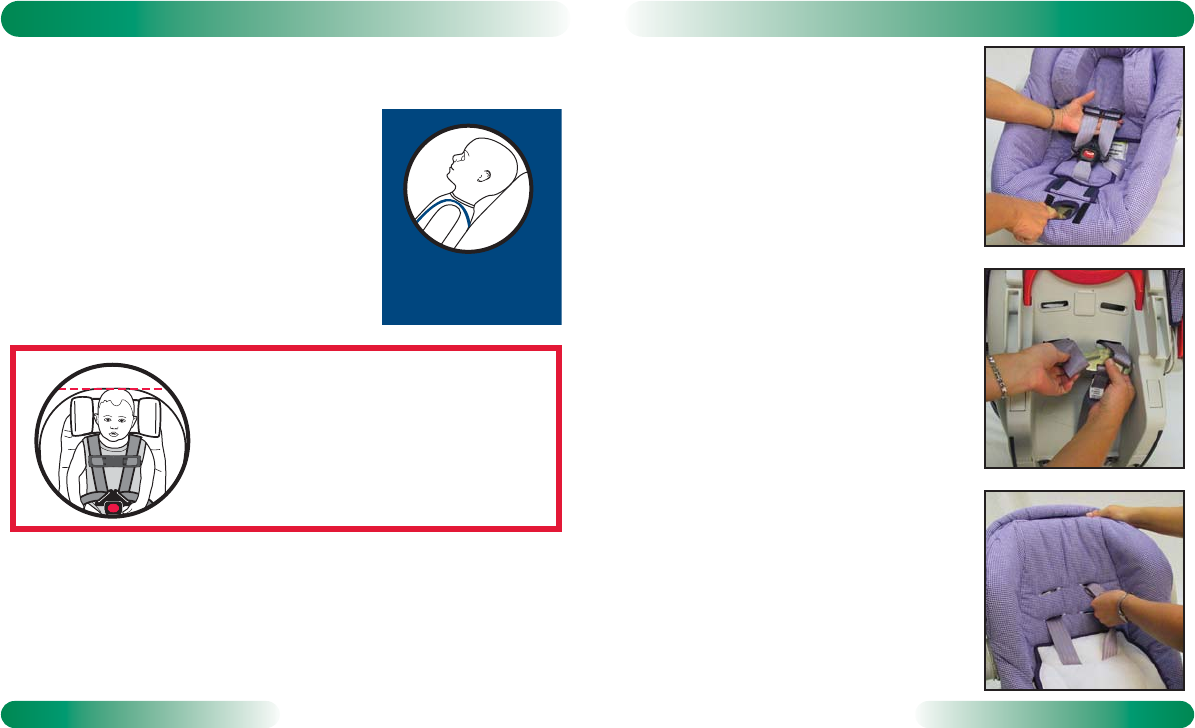
1514
Using the Restraint
Using the Restraint
Harness Height Adjustment
1 Loosen the harness by pressing the
harness adjuster lever while pulling the
harness straps forward as far as possible
(Fig. A).
2 From the rear of the restraint, unhook
the harness straps from the yoke (Fig. B).
3 Pull straps through the shell, cover, and
head pad.
4
Thread straps through proper slots in
head pad.
•
Use bottom slots in head pad when using
with bottom slots in shell. Use top slots in
head pad when using with middle or top
slots in shell.
5
Thread the harness straps through slots
in shell, at the new height, toward the
bottom of the restraint (Fig. C).
6 Reattach harness straps to the yoke
(Fig. B).
7 Pull harness adjuster strap to tighten the
harness.
8 Verify that all straps are threaded at the
same height and are not twisted.
Checking Harness Height
TToo CChheecckk HHaarrnneessss HHeeiigghhtt::
1 Place child in restraint, then secure
harness (see pages
24–25
).
2 Observe where the harness is positioned
on the child.
• Harness straps should be located in the
nearest slot at or below the child’s shoulder
3 If harness height is correct, continue using
child restraint without adjustment. If
harness height requires adjustment, refer to
Harness Height Adjustment on page 15.
Rear Facing
Strap Height
B
A
C
Weight Range
Rear Facing ONLY
4–22 lbs. (2–10 kg)
Maximum Height
The child is too tall when the top of the
head is above the top of the restraint or
height exceeds 30 inches (76 cm).
P2314_R02.qxd 6/4/2004 11:13 AM Page 16
